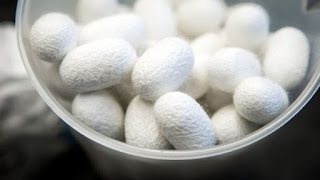Coldengham, New York
Store of Cadwallader Colden, Jr.
Kersey
Abraham Strickland purchased three-and-one-half yards of Kersey at the Colden Store on this day, 250 years-ago. He also purchased buttons and mohair.
 |
| Sample of Kersey in a 1770 Commercial Sample Book. Image courtesy of katedaviesdesigns |
==============================
Search the DayBook
This article is one in a series of a daily accountings of Colden Store transactions. Be sure you read the first installment for an introduction to the store. You should also read this article which appeared in the Journal of the Orange County Historical Society.
===============================
Webster defined Kersey in his 1828 dictionary as 'a coarse woolen cloth.' Caulfeild defined it as a 'coarse narrow woollen cloth, woven from long wool, and usually ribbed.'
Kersey was sold on twenty-two occasions in the DayBook. Its normal price was six-and-one-half shillings per yard. As mentioned in a prior post, the local fuller (William Sears) was paid by the Colden store to full, dye, press, and shear some Kersey.
===============================
Search the DayBook



















